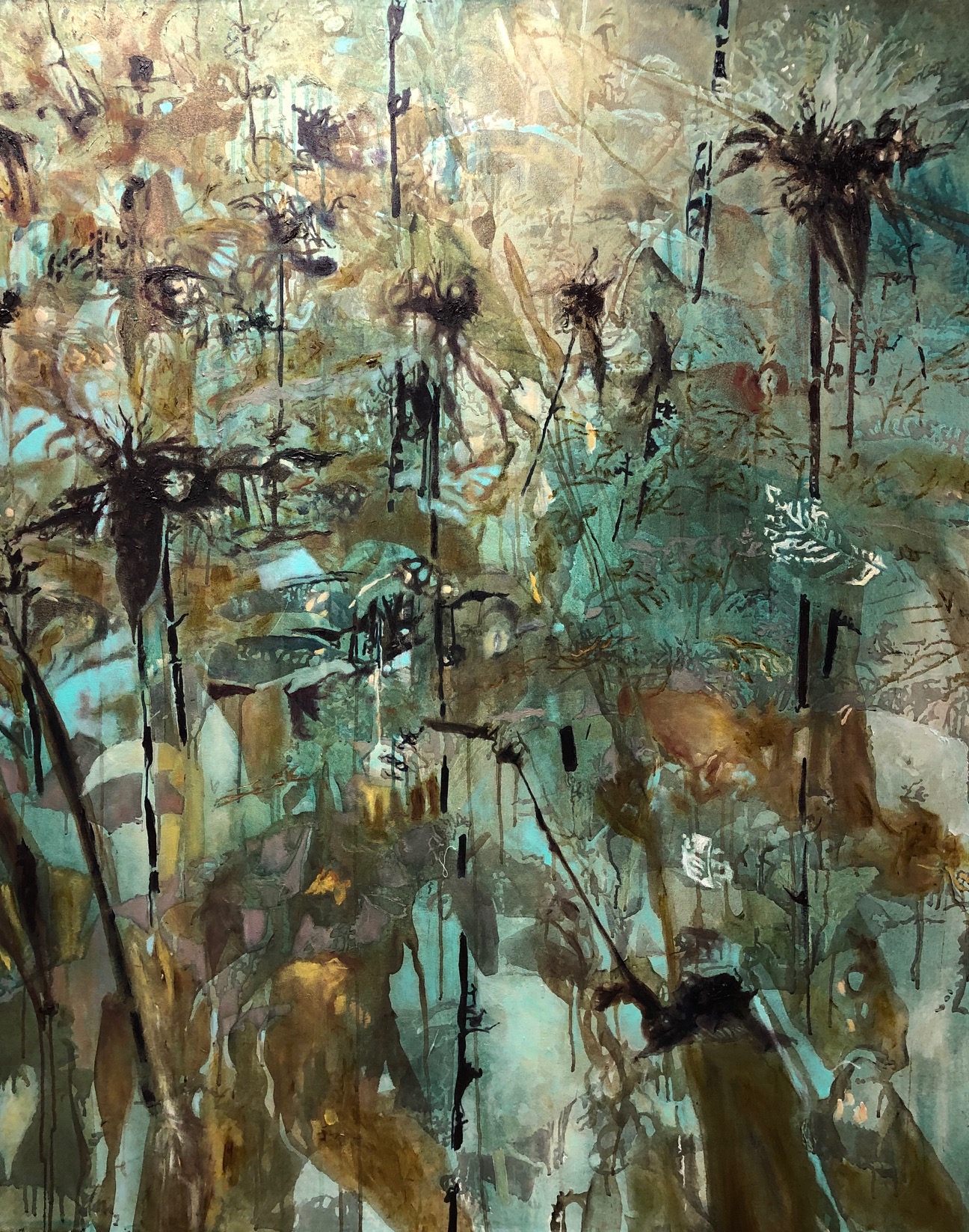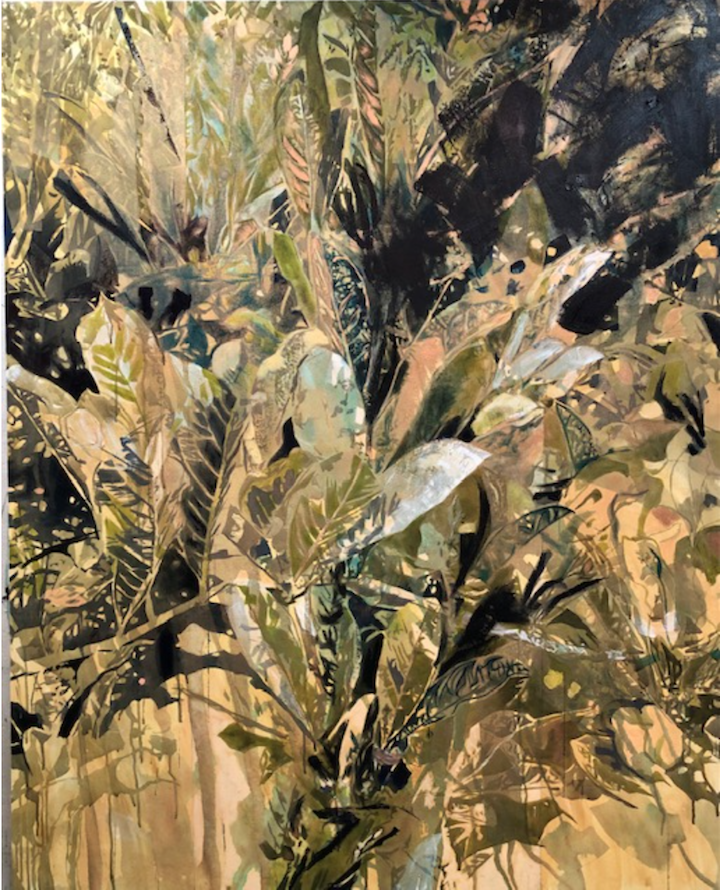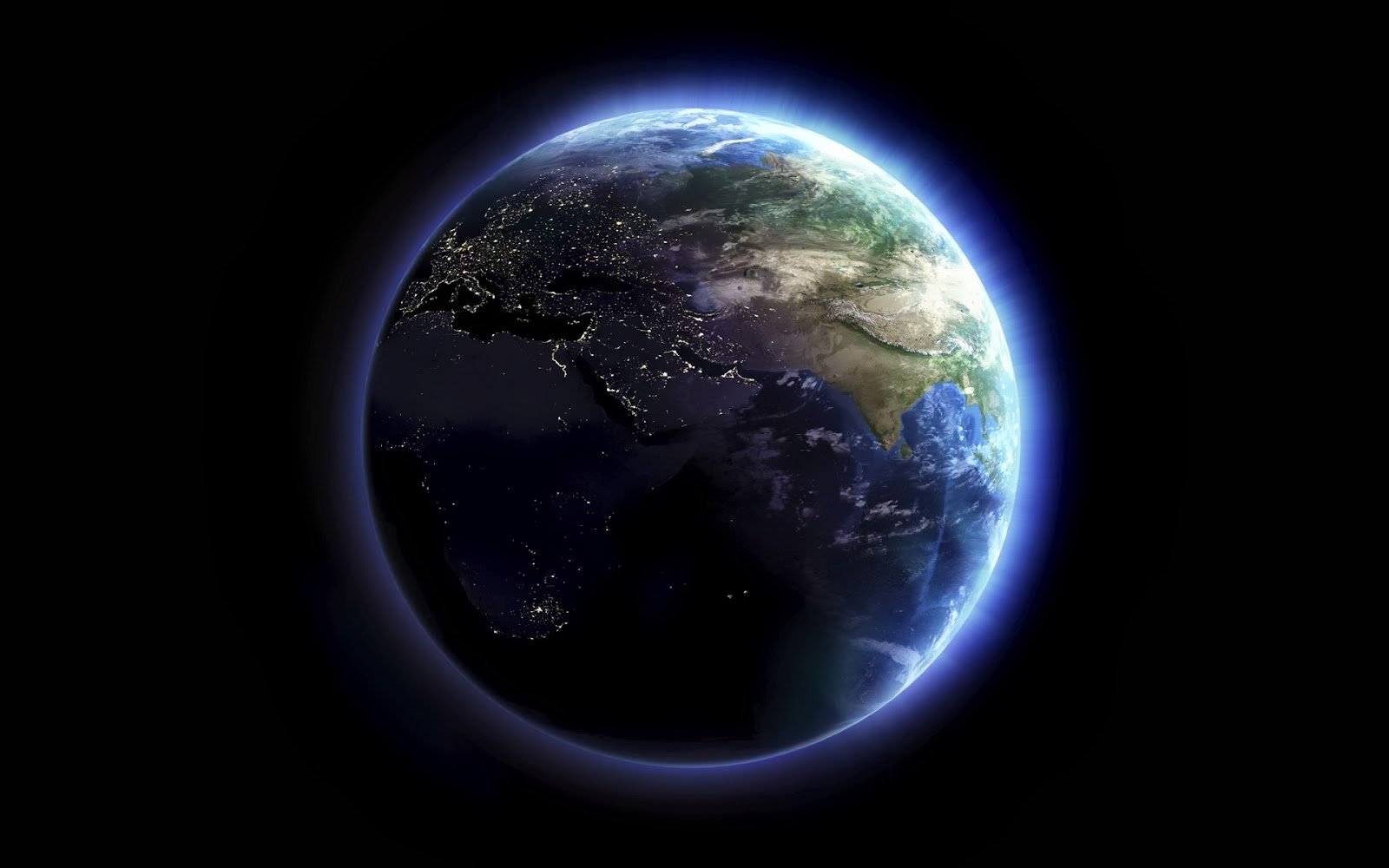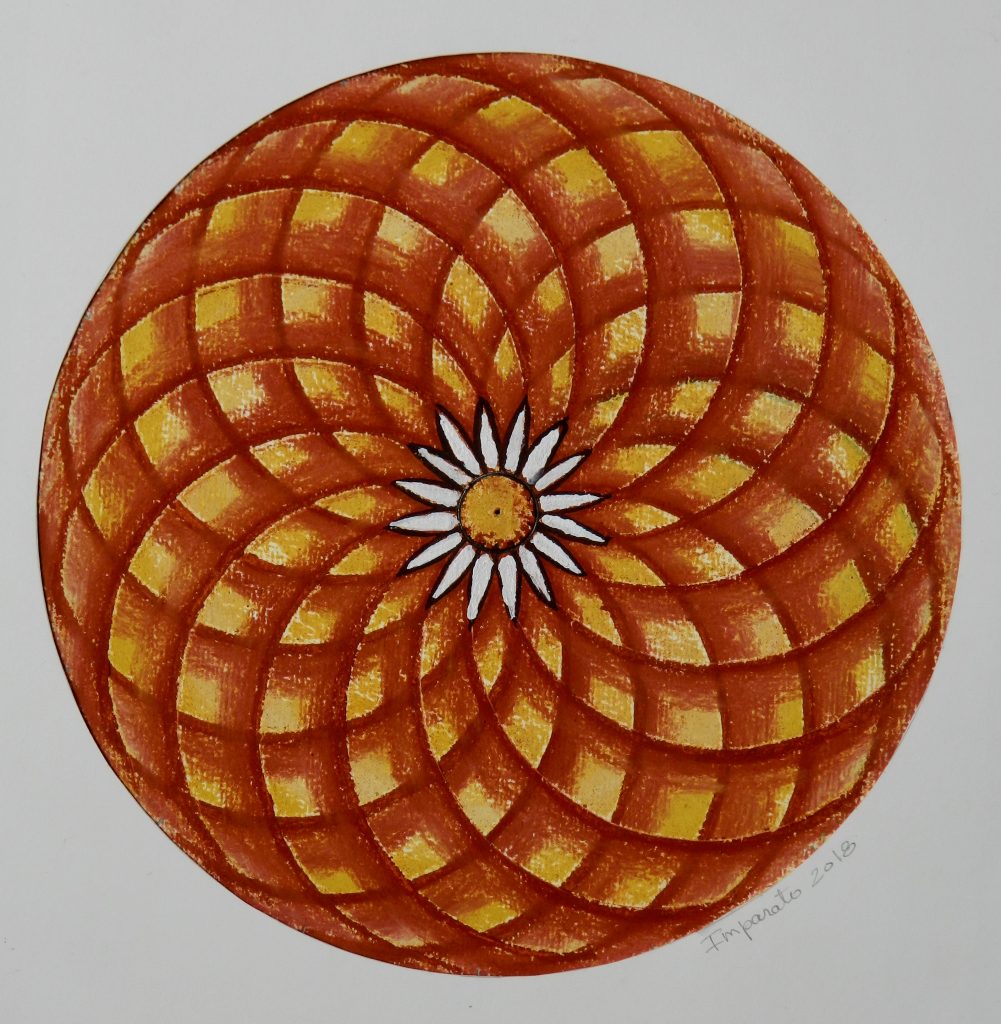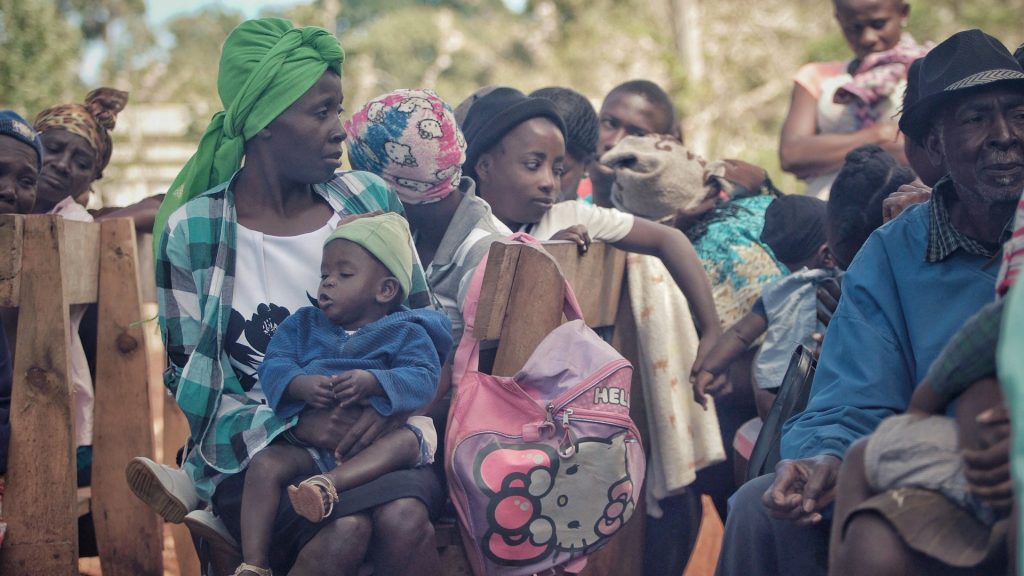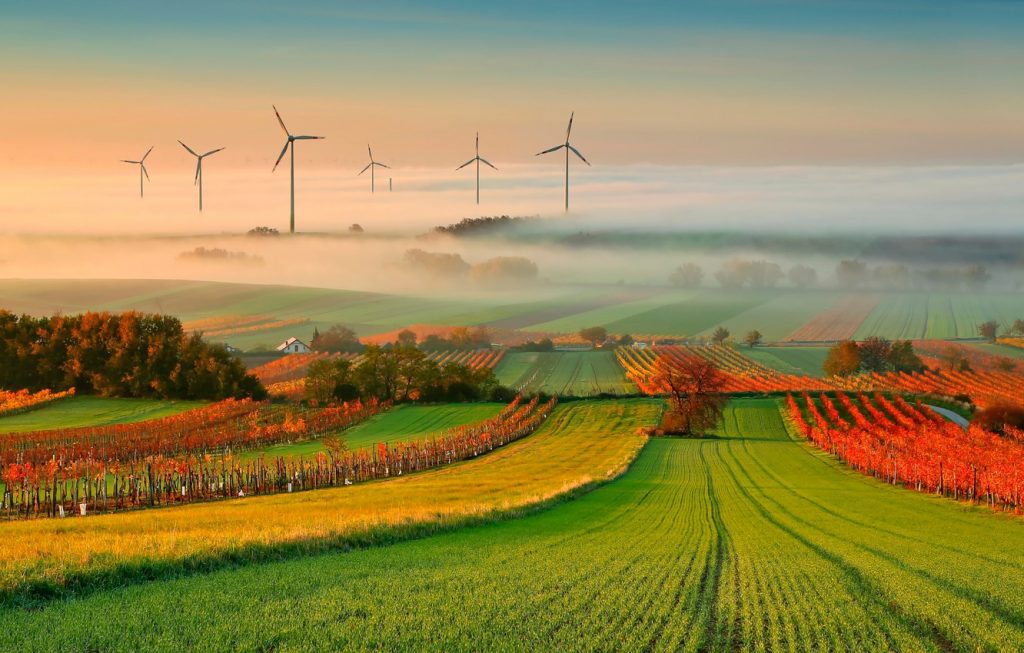The Ecozoans
In this essay I will attempt to explore the essential qualities needed for ushering in an ecological civilization—a human presence organized not only for human benefit, but one given form with supreme consciousness of and responsibility for the sustained flourishing within Earth’s entire community of life. We refer to this new mode of presence as “the Ecozoic,” a term coined by cultural historian and “geologian” Thomas Berry to denote the promise of an era when most humans will have entered into a deep process of supportive reciprocity with each other, Earth, and all living beings. An Ecozoan is a person who is leaning in to the Ecozoic—open to an intimate presence to, and an integral and creative understanding of the natural world, and is moving into a new kind of wholeness, belonging, and exuberant participation seldom experienced in the modern period. The leadership of Ecozoans flows naturally from an unquenchable desire to explore the beauty, scientific intricacies, and profound spiritual experiences of intuition, imagination, and artistic expression.
This epochal transition into the Ecozoic will evoke the development of some familiar, but greatly expanded personal qualities, including curiosity, wonder, reverence, respect, tolerance, appreciation, a penchant for creativity, and a preference for relationship over achievement, material resources, or status. It is even possible to imagine the emergence of new economic, political, commercial, and cultural societies with values grounded in the arts, the new cosmic story of the universe, and common feelings and needs that celebrate the creative building and maintenance of infrastructures of care (Naomi Klein) for each other and all life.
I will examine the arising of the Ecozoic era and the qualities of an Ecozoan through the work and wisdom of several great contemporary thinkers, including Thomas Berry, Brian Thomas Swimme, Wes Jackson, Wendell Berry, Robin Wall Kimmerer, Clare W. Graves, Don Beck, Christopher Cowan, Rupert Sheldrake, Leonardo Boff, and Donella Meadows. All pertain to understandings of and engagement with a new eco-culture that has both the seeds and energy for creating a regenerative economy and culture, through a super-interdisciplinarity within the entire range of human-other than human-Earth-Cosmos relations.
Who/What is an Ecozoan?
Everyone who breathes air, drinks water, takes in nourishment from the land, marvels at the moon, sun, and stars, and is conscious of being energized by wondrous processes that evolved over billions of years is an Ecozoan.
In the words of one notable Ecozoan: “Everyone has Ecozoan written in their heart-minds; some self-consciously live as Ecozoans, and, of these, some are Ecozoic leaders.”1
It would be difficult to find or create a better articulation or description of an Ecozoan, than to begin with a collection of phrases from the “Epilogue” of The Universe Story by Thomas Berry and Brian Swimme. As a prelude, it could be said that an Ecozoan, or one in the making, is a person either naturally susceptible and attracted to, or on a path toward the allurement of the natural world, its beauty, its workings, its mysteries, and its secrets; the exploration of its stupendous diversity, its history, its structure and functioning, and its having brought forth an astonishing array of beings of varying degrees of consciousness.
We know of no other place in the universe with such gorgeous self-expression as exists on Earth. . . [this] exuberance of life . . . single, multiform, sequential, celebratory event . . . exaltation of larks . . . flight and song expressing delight in existence.
The pressing toward expanded modes of being . . . the grandeur of the entire cosmic process . . . [and] our own special role to enable this entire community to reflect on and to celebrate itself and its deepest mystery in a special mode of conscious self-awareness.
This capacity to celebrate in our music and our art . . . dance . . . poetry, . . . in our religious/spiritual rituals, . . . .has provided the highest forms of human fulfillment.2
The Ecozoic is profoundly integrative, and thus, it is critical to connect Ecozoans from all primary fields of knowledge, practice, and desire. Desire in this context, is the deep attraction to, and curiosity for knowledge, understanding, experience, and expression. At the end of The Universe Story, Brian Swimme and Thomas Berry, in an ecstatic yet sobering statement, wrote:
Once we begin to celebrate the story of the universe, we will understand the attraction that so draws our scientists to their work, why every detail of our scientific inquiry becomes so important. Without entrancement within this new context of existence it is unlikely that the human community will have the psychic energy needed for the renewal of the Earth.3
 Desire, entrancement, are essential qualities for creating the energy necessary to usher in a new era of human-Earth relations. And in order to not leave out any field of knowledge or practice, it is also critical that the aspiring Ecozoan not resist fully developing both sides of the brain, the rational-analytical with the intuitive-imaginative-emotional self. In this sense, the desire for or necessity of specialization within a field needs to be secondary to an understanding of its interrelationships with all fields. “Nothing is itself, without everything else.”4
Desire, entrancement, are essential qualities for creating the energy necessary to usher in a new era of human-Earth relations. And in order to not leave out any field of knowledge or practice, it is also critical that the aspiring Ecozoan not resist fully developing both sides of the brain, the rational-analytical with the intuitive-imaginative-emotional self. In this sense, the desire for or necessity of specialization within a field needs to be secondary to an understanding of its interrelationships with all fields. “Nothing is itself, without everything else.”4
To set the stage for understanding the realms of consciousness needed for the Ecozoan, we need to envision the characteristics that define the flourishing dynamics of self-sustaining living systems. We are now in the closing phase of the Cenozoic era, a lyrical period in Earth’s history that began sixty-five million years ago following the death of the dinosaurs. This has been a period of stunning evolutionary creativity, from the building up of layers upon layers, nests within nests, of interdependent and emergent beings, phenomena, and ecosystems, to a period of cascading global catastrophes—new authoritarianisms, pandemics, ecological degradation, global warming, and the sixth great mass extinction. To move from the terminal Cenozoic to an Ecozoic era, will require nothing less than a reinvention of nearly every aspect of human self-understanding, behavior, and relationship within the Earth community of living beings and living and non-living systems.
In pursuit of the Good, the True, and the Beautiful—Ecozoans will unite spirituality— understood as the perceived, experienced, imagined, desired wholeness of inner and manifest being—with science, and art. Concepts, and expressions of beauty become unifying experiences that can hold all three together. Therefore, the Ecozoan will fully conceive, understand, feel, and embody a mutually enhancing relationship among all ways of knowing—scientific, literary, intuitive, and imaginative, and through traditional and Indigenous wisdoms.
Our attempts to explore and define the character and attributes of the Ecozoan cannot be pursued apart from imagining the evolving context within which this emergence has taken, is taking, and will take place, that of an emerging Ecozoic society or civilization.
To adequately address the questions of “What will a new Ecozoic society/civilization look like?” and “How can it emerge?” we cannot afford to only be in one of two camps: those focused on addressing climate change and other ecological crises or those imagining forward into the conceptual, structural, actualization of new societies in harmony with nature. However we conceive of moving into a viable human future, we must engage in this adventure of anticipatory emergent process, while seeking the leverage points in bio-cultural dynamics that can move our species quickly enough toward a balance of mutual reciprocity within the community of Earth’s life systems. In other words, we need both!
As a final, initial consideration, it is essential to think and imagine beyond establishing the reinvented human presence within the Earth community, to the understandings for maintaining an evolving and enduring integration with the natural world. The great cerebral cortex and strategic mind we have will always be vulnerable to the domination/duality paradigm. It is a tool too powerful for casual or careless use—will never cease to have the capacity to overwhelm or destroy delicately operating living systems—for it evolved extremely rapidly, but is undergirded and easily overwhelmed by reptilian and mammalian neuro-infrastructure that evolved over tens of millions of years for competitive survival.
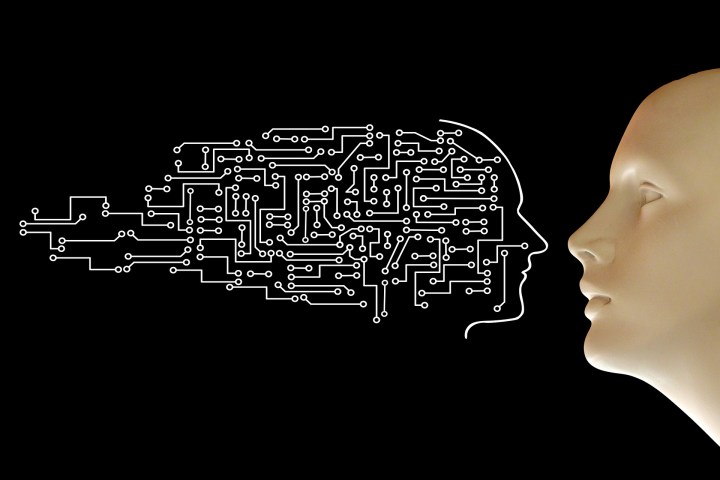 It requires a mode of continuous, deep, highly complex, and creative intervention at the cultural level of values and meaning—a dedicated pattern and process of engagement of its capacity for both high technical, mechanical, mathematical, and rational scientific invention/investigation, and an extremely complex imaginative, artistic/symbolic, emotional, relational and creative capacity for art, music, loving relationship, compassion, celebration, dependent co-arising, and co-operation.
It requires a mode of continuous, deep, highly complex, and creative intervention at the cultural level of values and meaning—a dedicated pattern and process of engagement of its capacity for both high technical, mechanical, mathematical, and rational scientific invention/investigation, and an extremely complex imaginative, artistic/symbolic, emotional, relational and creative capacity for art, music, loving relationship, compassion, celebration, dependent co-arising, and co-operation.
What cultural resources can possibly generate the power to absorb and integrate these stupendous potentialities into a community of living systems whose exquisitely balanced and intricately interwoven elements, capacities, and relationships have taken eons to evolve? There is insufficient room here to address this important question more fully, but the question’s traces will evoke insights from what has been said so far, and from what follows. It isn’t enough to bring about an Ecozoic civilization or society; our species needs a continuous immersion in a medium that, like a hormone or enzyme in the body, helps maintain and regulate the delicate balance with all living and non-living systems.
To explore the power of the poetry of science, through the wisdom and gifts of an Indigenous American, scientist, writer/poet, here is an offering to our growing portrait of the new Ecozoan, from conversations with Robin Wall Kimmerer and her book Braiding Sweetgrass, a tribute to her ancient culture of gift economy, generosity, reciprocity, and persistent celebration.
So how then can science, art, and story give us a new lens to understand the relationship that people made of corn represent? Someone once said that sometimes a fact alone is a poem—a beautiful poem, written in the language of chemistry.
Carbon dioxide plus water combined in the presence of light—and chlorophyll in the beautiful membrane-bound machinery of life yields sugar and oxygen.
Photosynthesis—Straw spun to gold, water turned to wine—the link between the inorganic realm and the living world—plants give us food and breath.
Sugar combined with oxygen in the beautiful membrane-bound machinery of life called the mitochondria yields us right back where we began—carbon dioxide and water.
Respiration—The breath of plants gives life to animals and the breath of animals give life to plants.
From Wes Jackson, a long-time friend of Wendell Berry, botanist, geneticist, leader in the international movement for sustainable agriculture, co-founder with Dana Lee Jackson of The Land Institute, and Life magazine’s “one of the most important Americans of the 20th century”—a selection of thoughts defining the membrane boundaries of Ecozoic orientations and organizing principles.
Hypothesis: “Since agriculture began, humans have produced no technological product or process—including our crops and livestock—without drawing down the earth’s capital stock and, thereby, reducing the overall net primary production of its ecosystems [that use] only contemporary sunlight. . . . We cannot do better than nature.
We need to become bookkeepers of [embodied energy]—students of boundaries—a necessity in both households and governments. But the boundary of consideration has been narrower than the boundary of causation. Deficit spending of ecological capital has been the rule—Embedded within civilization is scaffolding that we take for granted but that must be considered if we want to know the embodied energy of any human artifact and what it takes to repair it.
Ecosystems tend to accumulate ecological capital. Civilizations spend it, and the depreciation rate is huge.
The majority of solutions to both global and local problems must take place at the level of the expanded tribe, what civilization calls community.
We are unlikely to achieve anything close to sustainability (ecological perennial balance) in any area unless we work for the broader goal of becoming native in the modern world, and that means becoming native to our places in a coherent community that is in turn embedded in the ecological realities of its surrounding landscape.
The resettlement will be no small matter. It will have to be carried out by those who have a pioneering spirit, by those who see the necessity of such a dispersal (to gather dispersed sunlight in the form of chemical energy in a fossil-free world), by those intelligent enough and knowledgeable enough about its necessity that they will have the staying power.5
What human generated qualities must prevail in an Ecozoic society, to ensure its flourishing, and therefore must be imagined, understood, and cultivated in Ecozoans? To cultivate, educate for, and intentionally evolve the qualities and understandings Wes Jackson outlines, the emerging Ecozoan will need to develop a continued, growing sensitivity—attention—to what we may be overlooking in our own capacities; to evolve—to prioritize self-selection for mutual survival and quintessentially value harmony and beauty—pleasure, fulfillment, creativity, relationship, culturally and educationally turbocharged by the Project to Reinvent the Human—to deliberately select for cooperation and the afore-stated values.
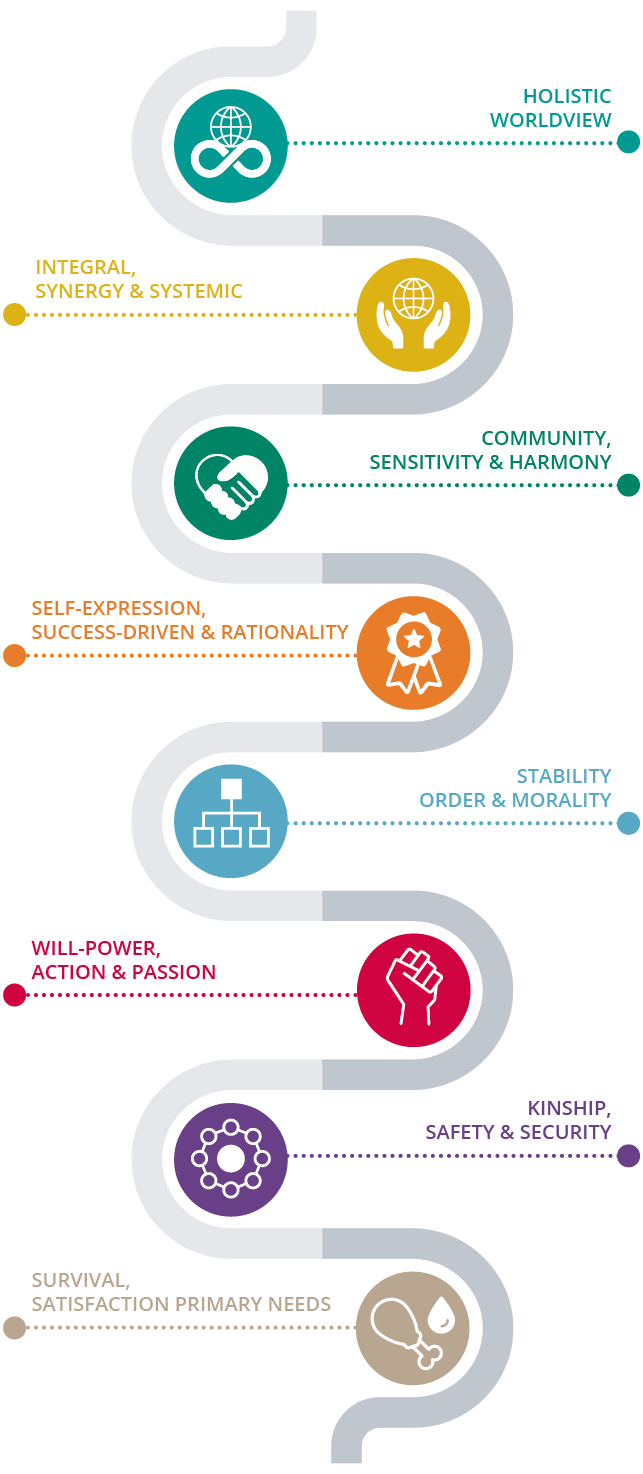 There is also much to be learned from Spiral Dynamics (SD), a powerful conceptual system for understanding human cultural development. Its creator Clare W. Graves called it “The Emergent, Cyclical, Double-Helix Model of Adult Biopsychosocial Systems Development.” In brief, individuals and cultures flow in and through a spiral series of memes (what biochemical genes are to cellular DNA, memes are to cultural/psycho-social DNA), which cannot be skipped (they are time developmental), and reflect worldviews, valuing systems, levels of psychological existence, belief structures, organizing principles, ways of thinking and modes of adjustment and adaptation. The Spiral’s eight core landmark memes are represented by different colors, the final two being yellow, and turquoise.
There is also much to be learned from Spiral Dynamics (SD), a powerful conceptual system for understanding human cultural development. Its creator Clare W. Graves called it “The Emergent, Cyclical, Double-Helix Model of Adult Biopsychosocial Systems Development.” In brief, individuals and cultures flow in and through a spiral series of memes (what biochemical genes are to cellular DNA, memes are to cultural/psycho-social DNA), which cannot be skipped (they are time developmental), and reflect worldviews, valuing systems, levels of psychological existence, belief structures, organizing principles, ways of thinking and modes of adjustment and adaptation. The Spiral’s eight core landmark memes are represented by different colors, the final two being yellow, and turquoise.
The first six memes are the subsistence memes. The attributes of the second-tier or being memes, seven—Integrative (“yellow”) and eight—holistic (“turquoise”), that evolved in the latter part of the 20th century describe with great precision the developing qualities and consciousness of the maturing Ecozoan.
People living out of the second-tier memes constitute only a small percentage of the human family. A few descriptive segments from the second tier will further our understanding of and attraction to the emerging ecozoan.
How prescient are these words of Graves from decades ago: “We are crossing a number of major technological and environmental thresholds during this generation. Any one of these crossings possesses the potential to detonate an evolutionary bomb which could totally change the direction of our kind.”7
While yellow attempts to stitch together particles, people, functions, and nodes into networks and stratified levels, turquoise detects the energy fields that engulf, billow around, and flow throughout naturally. Yellow connects the dots while turquoise fleshes in the art of all the colors and hues, and the picture comes alive. Yellow gets its hands dirty dealing with the chaos. The turquoise collective system steps back and creates the next form of order.
Turquoise views a world of interlinked causes and effects, interacting fields of energy, and levels of bonding and communicating most of us have yet to uncover. The meme liberates a sense of living systems that mesh and blend, flowing in concert with each other. This is another order-seeking system, but the first one that searches for the macro view. “Seeing-everything-at-once” before doing anything specific dominates the thinking process. Collective imperatives and mutual interdependencies reign supreme.
Turquoise: Blending and harmonizing a strong collective of individuals; Focus on the good of all living entities as integrated systems; Expanded use of human brain/mind tools and competencies; Self is part of larger, conscious, spiritual whole that also serves self; Global networking seen as routine; Acts for minimalist living so less actually is more.
A new version of spirituality. Standing in awe of the cosmic order, the creative forces that exist from the Big Bang to the smallest molecule. Life experiences show that one can never know or understand all things. With this acceptance comes wonder, awe, reverence, humility, unity, and a refreshed value for simplicity . . . reality can be experienced, but never known. Contemplation, then re-enters refreshed with new perspective.8
A final prescient thought from Graves: “The present moment finds our society attempting to negotiate the most difficult, but at the same time the most exciting, transition the human race has faced to date. It is not merely a transition to a new level of existence but the start of a new movement in the symphony of human history.”9
As conclusion to our exploration of the evolution and emergence of a new human for a new era, perhaps the most important consideration remains unexamined, though mentioned earlier as “the two camps”—those focused on the wounded patient, and those imagining and creating new and thriving conditions if our Earth community survives. Some in each camp, in their concentrated intentions seem unaware of the other. It is understandable that those attending the emergency be 100% attentive, for if the patient dies, all efforts of the others to bring forth a new and beautiful world are in vain. Yet, the work of helping bring forth the new is equally important and understanding that there are leverage points for transformation (see below), is critical for Ecozoans in their role as mentors in ushering in an Ecozoic era while it is still possible.
The work of Donella Meadows and others on systems theory offer powerful insights into the art of sensing or knowing the right action, at the right time, in the right place. “Leverage points are places to intervene in a system where a small shift can lead to fundamental changes in the system as a whole.”10 David Abson and his co-authors stated, “We propose a research agenda inspired by systems thinking that focuses on transformational sustainability interventions, centered on three realms of leverage: reconnecting people to nature, restructuring institutions, and rethinking how knowledge is created and used in pursuit of sustainability.”11
The following excerpts taken from the Tao of Liberation by Leonardo Boff and Mark Hathaway are inspiring entry concepts for exploration of how transformation may occur:
Could humanity with surprising suddenness and radicality—shift to new habits, perhaps even on a planetary level? What might it take to provoke such a shift?
Given the right conditions, radical change can happen in a very short period of time . . . the power to transform is not determined by brute force, but rather by sensitive intuition of timing and place.
A system is often most sensitive in those places where it is subjected to the greatest pressures. Just as new species often appear where an ecosystem is under stress—in regions . . . on the margins—so too may it be in human societies; we should therefore seek our creativity on the periphery of our social, economic, and cultural systems, . . . precisely in those regions where structures and paradigms are breaking through with creativity into new forms.
New fields start off as insights, intuitive leaps, guesses, hypotheses, or conjectures. They are like mental mutations . . . coming into being suddenly. (Rupert Sheldrake).
The more complex the system . . . the more sensitive to change—External stresses lead to sudden jumps—often with surprising rapidity—through a phenomenon called “punctuated evolution.”12
It would be difficult to imagine a system more complex than an Earth-scale matrix of subatomic particles to geosphere, hydrosphere, atmosphere, ecosphere, noosphere (culture-mind-infosphere) evolved over 13.8 billion years of diversification, autopoiesis, sympoiesis, and interrelationship!
Throughout cosmic history many thresholds of complexification, newly emergent structures, processes, and relationships have been crossed suddenly. Some have occurred through processes of internal complexification leading to the appearance of completely new phenomena; others have been triggered by events that suddenly push galactic systems or ecosystems into new structures or relationships. Two familiar examples: an asteroid striking Earth 65 million years ago triggered the end of over 200 million years of the age of dinosaurs and suddenly created conditions for an explosion of mammals, trees, flowers, and us; and just months ago an invisible virus (COVID-19) has entirely changed the cultural dynamics of Earth’s most powerful species.
We are living in a quintessentially punctuated, evolutionary moment, in which not only human civilization, but planetary life itself are threatened. Ecozoans have emerged at this time precisely in response to these dramatic conditions, and are called to understand themselves, their connections, and their roles and purposes to help trigger within our community of life systems, an evolutionary immune response. Ecozoans can further display what Wes Jackson calls “the virtues of ignorance,” a reorientation to what Wendell Berry, Jackson, and Bill Vitek call an “ignorance based worldview,” that recognizes “knowledge alone is not adequate to run the world,” and to foster immense humility, respect, care, and restraint in all scientific, agricultural, entrepreneurial, and other human interventions within the natural world.13
Ecozoans will fully develop an intuitive alignment with the time-developmental rhythm of the cosmos, while helping the business community redefine itself—in a contribution of beauty, meaning, and relationship enhancement where job creation is truly creative, all jobs have a creative component, and where agency and participation are maximized. We will remember what it is like to be a child, and will know, as if for the first time, that children in large measure are Ecozoans. Beauty will increasingly be understood as trans-aesthetic—as the experience of many levels of established or unfolding order, in living and non-living beings, structures, relationships, processes, leading to an elevation of perception—a flow of apprehension—an expansion of attention and participation . . . and then a contraction or transcending of attention into pure experience.
We will find ourselves in a vastly different world, thinking in a very different way than now—more than a new way of being, but a celebration of continuous becoming.
There is a now distant music . . . sounding on the horizon of a new era.
A note on the art to the right: Thomas Berry invented the word ‘inscendence’, which appears only once (I think) in Dream of the Earth. A deep dive into the idea is explored in an essay by Bill Plotkin: “Inscendence – The Key to the Great Work of Our Time: A Soulcentric View of Thomas Berry’s Work”, in this book and here in this edition of Kosmos.
Art by Cami Davis
Bhramari Pranayama I (Bee Breath) and Memorial Magnolia are part of the series titled A Question of Inscendence. The painting practice offers a framework for making sense of a perceived immersion within the presence of a living world and universe. Transcendence, though felt, can pull us out of the sensuous. Inscendence explores the notion that the sacred is right here throughout the Earthly human and more-than-human experience.
References
[1] Herman Greene.
[2] Thomas Berry and Brian Thomas Swimme, The Universe Story, 263-67 (1992).
[3] Ibid., 268.
[4] Ibid. (italics added).
[5] Wes Jackson, Becoming Native to This Place (1996); and from personal conversations.
[6] Don Edward Beck and Christopher C. Cowan, Spiral Dynamics: Mastering Values, Leadership and Change 4 (1996).
[7] Clare W. Graves. The Futurist (April 1974)
[8] Don Edward Beck and Christopher C. Cowan, Spiral Dynamics (1996), 319.
[9] Ibid.
[10] Donella Meadows, “Leverage Points: Places to Intervene in a System” (1999), 1, https://web.archive.org/web/20131008160618/http://www.sustainabilityinstitute.org/pubs/Leverage_Points.pdf (accessed July 24, 2020).
[11] David Abson, et al, ”Leverage Points for Sustainability Transformation,” 30 Ambio (Feb. 2017), 46(1).
[12] Mark Hathaway and Leonardo Boff, The Tao of Liberation: Exploring the Ecology of Transformation (2009).
[13] Bill Vitek and Wes Jackson, eds., The Virtues of Ignorance: Complexity, Sustainability, and the Limits of Knowledge (2010).



